http://www.specialequestrians.org
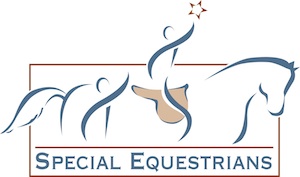
Special Equestrians
2800 Street Road
Warrington, PA 18976
Mailing Address:
P.O. Box 1001
Warrington, PA 18976
Phone: 215-918-1001 MAKE AN INQUIRY
View our WEBSITE
View our GUIDESTAR PROFILE
EIN: 23-2196098Founded: 1982
View our PHOTO GALLERY
Profile Last Updated April 18, 2024Public Charity
Click here to view listing(s) of the program horses we are seeking
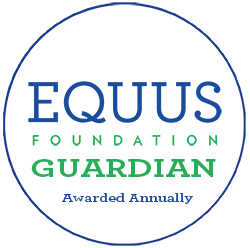
The Guardian Seal of Transparency is awarded annually to recognize an organization's commitment to transparency and accountability by their willingness to make comprehensive data about their programs, horse care practices, and governance available for public scrutiny. The Guardian Seal of Transparency is NOT an endorsement.
Last Updated: June 26, 2023
Special Equestrians has not attained the Guardian designation for 2024.
MISSION & PROGRAMS
Mission:Special Equestrians is a non-profit therapeutic riding program located in Southeastern Pennsylvania whose mission is to improve the wellbeing of individuals through the equine experience. Founded in 1982, our center offers four types of individual programs: therapeutic riding instruction, hippotherapy, Silver Saddles for individuals with age-related disabilities, and ground-based mental health programming for children and teens. We also offer on- and off-site group programs for 15 community partners. Participants meet criteria for a wide range of diagnoses, including autism, intellectual disability, cerebral palsy, ADHD, anxiety, PTSD, traumatic brain injury and genetic disorders. Partnering with a horse allows our participants to reach greater heights as they build strength, confidence and emotional connection.
Our organization conducts Equine Assisted Services in accordance with the EQUUS Foundation Guidelines on Qualifications of Organizations Conducting Equine Assisted Services (EAS).
Our organization provides community outreach and/or public education programs involving horses.
Our organization is directly responsible for the care and shelter of equines involved in our programs.
100% of our total programs and services are equine-related.
Our organization does not CURRENTLY use satellite, overflow, foster, and/or outreach facilities.
Summary of organization's recent accomplishments, goals, strategies to achieve the goals, and capabilities to meet the goals, including its long-term plans to sustain its programs:
2023 was a banner year for Special Equestrians in a number of ways. As we reviewed the data on the number of participants served, we were all amazed at our final numbers for the year. We reached 449 unduplicated participants (previously 351) through a total of 3,291 individual and group sessions (previously 2,702), including our popular weeklong summer camp in August. 63% of participants in our individual programs were ages 18 and under, and key populations included autism, genetic disorders, intellectual disability, cerebral palsy, ADHD and brain injury.
Special Equestrians’ volunteers are the backbone of our success – assisting with students and horses in lessons, working around the barn, helping with special events and providing administrative support. 175 volunteers put in a total of 10,108 hours in 2023.
Our neighbors appreciate the passion and contributions we bring to the community --- so much so that they voted us Best Charity in Bucks County for 2023 in The Happening List competition.
Organizationally, Special Equestrians completed the first year of our three-year strategic plan, which includes seven goals to help build long-term sustainability, and all Year 1 goals were met. Highlights include:
• Expanding relationships with donors, especially major donors, which resulted in increased contributions in 2023;
• Building a high-functioning Board through the addition of two new members with equine and legal backgrounds.
• Expanding mental health programming through the creation of two new programs; and
• Implementing a Salesforce-based database designed specifically for therapeutic riding centers to manage participants and horses, track demographics, and track donations and grants.
In addition, the Year 2 goal of establishing the Emergency Medical Fund with a $25,000 target was met halfway in Year 1 thanks to a $12,500 grant from the Irving & Phyllis Millstein Foundation. The Millstein Foundation also supported the purchased of a 4-Star 2-horse bumper pull trailer with storage tack room to transport horses to off-site group sessions and to horse shows.
With regard to Board expansion, Special Equestrians’ Board of Directors voted in two new members in the fall of 2023, bringing the total number of Board members to 9. Lesley Mehalick, a shareholder of McAndrews Law Offices and the Supervising Partner for the Estate Planning and Estate Administration department; and David Adam-Castrillo, a veterinarian and owner of Bucks County Equine in New Hope, PA. Together with his wife Miriam, David has bred and raised horses at their farm in Bucks County, where Miriam has successfully trained them to the level of Grand Prix in showjumping.
Special Equestrians’ programs would not be as successful as we are without our instructors and horses. Our program leadership was able to add instructor and clinical hours in 2023, allowing us to bring on new participants who were on our wait list. To assist with the added number of clients, two new horses joined the herd. Mack, a 14 year old Warmblood, is officially the tallest horse in the barn standing at 17.2 hands. He participates in both independent and on-lead lessons, and he has already won over the hearts of so many riders and volunteers. Desi, a 20-year-old Percheron mare, stands at 16 hands. She takes great care of her riders, supporting them in Silver Saddles, independent lessons, and a few on-lead lessons.
One of our Thoroughbreds, Kat, was recognized for excelling at a second career after racing. The Jockey Club Thoroughbred Incentive Program (TIP) chose our sweet Kat to be the 2023 TIP Thoroughbred of the Year. Many of the horses at Special Equestrians have slow gaits that help support the unique populations that we serve, and the addition of Kat allows us to serve additional client needs. Riders with autism and intellectual disabilities often need a great deal motor and sensory input to calm their body, which Kat provides with his forward gait. “He may have been born into the world of racing, but he was destined to be a therapy horse,” says our program manager, Dana Fielding.
Also last year, Dana Fielding officially obtained her certification as an Equine Specialist in Mental Health and Learning. She began working with participants one of the two new mental health programs developed in partnership with our local county for serve children and teens on Medicaid who are not responding to traditional talk therapy. Through Equine-Facilitated Psychotherapy program, a licensed mental health therapist will partner with one of our two Equine Specialists during weekly sessions to address the client’s treatment plan. Through Therapeutic Horsemanship, an Equine Specialist leads the client through ground-based activities that build confidence, self-esteem, coping skills and social-emotional skills.
Special Equestrians collaborated with three local universities in 2023, allowing their students to gain practical experience while contributing fresh perspectives in the field of equine-assisted activities. Our program team worked with West Chester University and their Master of Social Work Internship program and Temple University and their Occupational Therapy Level 1 and Level 2 Fieldwork students. We also partnered with Delaware Valley University and their E360 internship program, collaborating with courses within the equine science major including Equine Event Management, Equine Massage and Animal-Assisted Activities and Therapies.
Finally, Special Equestrians organized a Board of Directors Experience Day to help members gain an understanding of the impact equine therapy has on participants with disabilities. The experience enhanced their ability to make informed decisions, provide strategic guidance, and advocate effectively on behalf of the organization.
Equine Assisted Services (EAS):
Our organization provides the following Equine Assisted Services (EAS):
Therapeutic Mounted Services
Therapeutic Unmounted Services
Equine-Assisted Psychotherapy/Counseling (Mental Health)
Equine-Assisted Occupational Therapy/Physical Therapy/Speech-Language Pathology
10: Total number of Equine Assisted Service Providers at Special Equestrians
1. Dana Fielding
FACILITY PARTICIPATION:
Special Equestrians
RELATIONSHIP: Employee
SERVICES PROVIDED:
Therapeutic Mounted Services
Therapeutic Unmounted Services
DEGREES, LICENSES AND/OR CERTIFICATIONS
PATH Intl. Certified Therapeutic Riding Instructor in Training, PATH Equine Specialist in Mental Health & Learning in training, B.S. in Biological Psychology
2. Debbie Saffren
FACILITY PARTICIPATION:
Special Equestrians
RELATIONSHIP: Employee
SERVICES PROVIDED:
Equine-Assisted Occupational Therapy/Physical Therapy/Speech-Language Pathology
DEGREES, LICENSES AND/OR CERTIFICATIONS
PATH Intl. Registered Therapist in Hippotherapy, American Hippotherapy Association Level I certification
3. Janice Witt
FACILITY PARTICIPATION:
Special Equestrians
RELATIONSHIP: Employee
SERVICES PROVIDED:
Therapeutic Mounted Services
Therapeutic Unmounted Services
Equine-Assisted Occupational Therapy/Physical Therapy/Speech-Language Pathology
DEGREES, LICENSES AND/OR CERTIFICATIONS
PATH Intl. Certified Therapeutic Riding Instructor, Registered & Licensed Occupational Therapist, B.S. in Psychology, Master of Science in Occupational Therapy
4. Kathy Harris
FACILITY PARTICIPATION:
Special Equestrians
RELATIONSHIP: Employee
SERVICES PROVIDED:
Therapeutic Mounted Services
Therapeutic Unmounted Services
DEGREES, LICENSES AND/OR CERTIFICATIONS
PATH Intl. Certified Riding Instructor
5. Lara Feldman
FACILITY PARTICIPATION:
Special Equestrians
RELATIONSHIP: Employee
SERVICES PROVIDED:
Therapeutic Mounted Services
Therapeutic Unmounted Services
DEGREES, LICENSES AND/OR CERTIFICATIONS
PATH Intl Advanced Level 1 Certified Instructor, Certified Equine Massage Practitioner, B.S. in Equine Science, M.S. in Animal Science, an MBA and is currently pursuing her Doctorate in Organizational Business Leadership.
6. Leslie Mangigian
FACILITY PARTICIPATION:
Special Equestrians
RELATIONSHIP: Employee
SERVICES PROVIDED:
Therapeutic Mounted Services
Therapeutic Unmounted Services
DEGREES, LICENSES AND/OR CERTIFICATIONS
Bachelor's Degree in Elementary Education, Master’s Degree in Special Education, PATH Intl. Certified Therapeutic Riding Instructor in training
7. Megan Glenn
FACILITY PARTICIPATION:
Special Equestrians
RELATIONSHIP: Employee
SERVICES PROVIDED:
Equine-Assisted Occupational Therapy/Physical Therapy/Speech-Language Pathology
DEGREES, LICENSES AND/OR CERTIFICATIONS
B.S. in Therapeutic Recreation, M.S in Occupational Therapy, in the process of Hippotherapy Certification from the American Hippotherapy Association.
8. Sally Hibbert
FACILITY PARTICIPATION:
Special Equestrians
RELATIONSHIP: Employee
SERVICES PROVIDED:
Therapeutic Mounted Services
Therapeutic Unmounted Services
DEGREES, LICENSES AND/OR CERTIFICATIONS
PATH Certified Therapeutic Riding Instructor, Certified Centered-Riding Instructor-Level 1
9. Valerie DiPasquale
FACILITY PARTICIPATION:
Special Equestrians
RELATIONSHIP: Employee
SERVICES PROVIDED:
Therapeutic Mounted Services
Therapeutic Unmounted Services
DEGREES, LICENSES AND/OR CERTIFICATIONS
PATH Intl. Certified Therapeutic Riding Instructor
Overview of our programs involved with providing EAS to individuals with special needs:
Special Equestrians operates year-round with 15 therapy horses, 19 full- and part-time staff members, and 150 volunteers. 72% of our riders are age 18 or younger. Special Equestrians offers a range of private, semi-private and group lessons targeted to specific physical, mental, and emotional needs:
INDIVIDUAL LESSONS
Therapeutic Riding is Special Equestrians’ largest program, offered to individuals who have challenges associated with a physical, cognitive or social-emotional disability. Students in our therapeutic riding program build confidence and independence as they develop mastery of different riding skills at their own pace. Lessons are structured to provide students with educational and hands-on opportunities to promote the development of horsemanship skills such as basic horse care and riding skills.
Hippotherapy is an evidence-based practice conducted at our barn by specially trained occupational and physical therapists for children and adults with neuromotor, cognitive and/or sensory difficulties. Instructors use the horse’s movement as a therapy tool to achieve individualized goals aiming to facilitate overall function in a person’s everyday life. The three-dimensional movement of the equine can improve the flexibility, posture, balance, core strength and mobility of the rider.
Through our Mental Health Programs, children and teens participate in weekly sessions conducted by a PATH International certified Equine Specialist in Mental Health & Learning in our Therapeutic Horsemanship program or can be partnered with a licensed mental health professional for Equine-Facilitated Psychotherapy. Sessions involve working with the horse on the ground and learning horsemanship skills to build confidence, self-esteem, coping skills and social-emotional skills. Participants will develop life skills through activities such as leading, grooming, lunging, obstacle courses and observing horses in the herd. Challenges that arise will pose an opportunity to teach skills for daily life.
Silver Saddles is a program specially focused on improving overall strength, endurance and flexibility for people over the age of 55 with age-related disabilities. Lessons are focused on partnership with the horse through the use of classical dressage principles, which increases students’ range of motion, endurance, and core strength.
Special Equestrians offers a one-week summer horse camp in August for children with disabilities ages 8 to 16. Many already participate in weekly programs. Activities include group therapeutic riding lessons and unmounted instruction on horse care and stable management, arts and crafts, team-building activities, and downtime to relax with therapy dogs. At the end of the week, campers participate in a horse show to demonstrate their new skills to family and friends.
GROUP LESSONS
Special Equestrians is offering two types of equine-assisted activities that meet community partners’ needs as well as our safety protocols:
1) Off-site, ground-based programming. Special Equestrians brings two horses directly to community partners for ground activities. The goal is to provide enjoyment and learning opportunities for individuals with developmental, intellectual and emotional disorders. For students on the autism spectrum these sessions provide a unique opportunity for growth and development in social communication through activity-based learning that harnesses the transforming power of interaction with horses. For all participants, it helps them overcome a fear of the horses and regulate behaviors. They will learn safety awareness around horses, and how to groom and a general overview of horsemanship.
2) Small groups of on-site visits to Special Equestrians for mounted and unmounted programming. These programs operate in close collaboration with local alternative schools, adult programs for individuals with autism/intellectual disabilities, children in foster care, cancer support groups, and at-risk youth. Lessons and workshops help promote team building with peers, positive communication skills, increasing awareness of others, and empathy. The trusting nature of the horse-human connection encourages participants to lower their defenses and their habitual reactivity and become more receptive to new ideas and positive relationships with others.
In additional we provide community engagement activities, working with various youth organizations as well as students whose high school curriculums include community service hours. We also host corporate volunteer outings where large groups or teams come to assist with various projects around the barn or on the property.
Finally, Special Equestrians hosts area groups within the Girl Scouts, Boy Scouts, and Eagle Scouts organizations. Some are looking to earn horseback riding badges, while others assist with various projects around the barn or on the property.
Community Outreach and/or Public Education:
Special Equestrians holds two student horse shows every year: one in the spring and the other in the fall. These events introduce the community to the power of therapeutic riding and the programs offered at SE and give families and community members an opportunity to see riders build confidence by displaying their talents and receiving ribbons for showing their horse. In addition, we offer a Holiday with the Herd open house in December that allows the community to get an up-close look at our horses and get their photo taken with a horse.
Special Equestrians also transports one or two of our therapy horses to area schools, human service agencies and senior living communities, during which attendees are able to interact with the horses for one hour in an open-house format. During these off-site visits, we have witnessed many meaningful connections occur between humans and our horses. Attendees respond well to the calm and trusting nature of horses and their bright, soulful eyes reinforce the deep synergies between human and equines.
Finally, Special Equestrians attends local community day events and brings 1-2 horses for attendees to groom, pet and take pictures with.
Research/Medical Use of Equines:
Our organization has never made, and would not ever consider making, equines available for research studies or medical training that involves invasive procedures and/or that which may cause pain or suffering to the equine.
Religious Affiliation:
Our organization does not promote religious education, religious purposes, or a specific religious faith or use donations for religious education or religious purposes; require participants to be of a certain faith; require participation in religious, instruction, activities or services; or require participation in prayer, worship, religious instruction or other religious activities as a condition of receiving social or secular services offered.
Auction Donation:
Our organization has never allowed, or would not consider allowing, an equine to be sold, transferred, released, or otherwise placed into possession of any person or organization that would cause or allow the equine to be sold at auction for slaughter.
POLICIES: ACQUISITION
Our organization acquires horses/equines from the following source(s):
Donation
Lease
Purchase from Owner
Return
Our organization does not acquire horses/equines from the following source(s):
Auction
Kill pen/Feedlot
Surrender
Seizure
Abandonment
Our organization will accept the following:
Geldings
Mares
Not Checked:
Pregnant Mares
Foals
Stallions
Only Stallions to be castrated
POLICIES: INTAKE, ASSESSMENT & TRAININING
Prior to a horse being accepted and/or arriving at the facility, the organization requires the following with respect to the health status of the horse:A current Coggins
Vaccination records that have been administered within the last 12 months
If health records are not available or are out-of-date, the owner is responsible for having vaccinations administered.
If health records are not available or are out-of-date, our veterinarian will administer appropriate vaccinations
A health certificate signed by a veterinarian and dated no more than seven days prior to arrival is provided to our organization either prior to or upon arrival of the equine attesting to the health status of the equine
Prior to a horse being accepted and/or arriving at the facility, the organization has the following policies in place:
The owner of a potential equine is interviewed over the phone or in person prior to seeing the equine
The equine is evaluated at its place of residence
The owner completes an application/contract which constitutes the agreement between the owner and our organization
The owner is financially responsible for the shipping of the equine to and from the organization
Equines are on trial for up to 30 days
Equines are on trial up to 60 days
Equines are on trial for 60 or more days
The trial period may be reduced based on the equine's progress
During the trial period, the organization accepts total financial responsibility for the care of the equine, including board, feed, shoeing and any necessary veterinary care
During the trial period, the organization accepts financial responsibility for the care of the equine, including board, feed, shoeing and any necessary veterinary care, up to a fixed amount agreed upon by the organization and the owner
The trial period may be terminated by either the organization or the owner for any reason
Equines are not taken on trial
During the trial period, the owner/donor is financially responsible for the care of the equine, including board, feed, shoeing and any necessary veterinary care
Following arrival of the equine at the facility, the following is performed:
Physical examination by a veterinarian upon arrival
A Henneke Body Conditioning Score or other body conditioning score is assigned
Physical examination by trained barn staff
Photographs are taken of each equine upon arrival at the facility and kept with the equine's health records
Physical examination by a farrier
Physical examination by a dentist
Coggins test
Fecal test
Vaccinations
De-worming
The equine is scanned to check for a microchip
Blood work other than Coggins
The equine is microchipped if the scan indicates that there is no microchip
Upon intake, the organization has the following quarantine policy in place:
The equine is confined to a designated and separate area for isolation and quarantine at the facility for a prescribed period of time
The equine is confined to a designated and separate area for isolation and quarantine off-site for a prescribed period of time
The equine is not quarantined
The typical length of quarantine is: 10 to 20 days
Horses are assessed for following skills and behaviors:
Retrieval from a pasture/paddock
Leading with a halter and lead rope
Temperament, disposition and attitude, such as rated from very calm to very high spirited
Saddling
Bridling
Lunging
Loading onto and unloading off a trailer
Mounting and dismounting
Riding at the walk
Riding at the trot
Riding at the canter
Riding by a beginner and/or unbalanced rider
Tolerance to unusual objects and loud noises
Known vices, i.e., cribbing, biting, kicking, weaving, stall walking, etc
Grooming
Bathing
Clipping
Tolerance to multiple handlers at the same time
Jumping
Driving (Pulling a carriage)
Our organization has the following policies and procedures in place pertaining to the ongoing assessment of horses in its care:
Physical examination by a veterinarian at least annually
The Henneke Body Condition score or other body conditioning score is updated at least annually
Photographs are taken of each equine annually and kept with the equine's health records
Equines at our facility may be treated by an equine chiropractor
Equines at our facility may be treated by an equine acupuncturist
Equines at our facility may be treated by an equine massage therapist
Equines at our facility may be treated by an equine nutritionist
Photographs are taken of each equine monthly and kept with the equine's health records
Our organization evaluates at least annually and maintains a written record of the weight-carrying and workload limitations for each equine that is ridden
Our organization does not evaluate the weight-carrying and workload limitations for each equine that is ridden
No equines are ridden; not applicable
The following variables are considered in determining the weight-carrying and workload limitations for each equine that is ridden:
Equine age, weight, breed, body condition, fitness, balance, health and soundness
Equine conformation to include the top line, length of back, strength and width of loin, bone density (measured by the circumference of the cannon bone just below the knee)
Size, shape, condition and angle of the hooves
Participant weight, height, body proportions, balance, fitness and riding skills as well as behavioral issues and safety concerns
Weight and proper fit of the saddle and other equipment
Terrain and footing in the working environment
Duration and frequency of working sessions, as the frequency with which an equine is subjected to maximum weight carrying and/or workload
Nature and pace of work, repetitive or varied, radius of turns, degree of incline and regularity of footing when equine is subject to maximum weight-carrying capacity
Temperature and/or weather conditions
Seasonal impact on the equines' workload and weight-carrying capabilities and limitations
Our organization does not evaluate the weight-carrying and workload limitations for each equine that is ridden
No equines are ridden; not applicable
Horses provided formal training (groundwork or riding): Daily
POLICIES: BREEDING
The organization has the following policies related to breeding and stallions:Our main facility where our organization conducts its programs does NOT breed equines.
One or more of the facilities where our organization conducts its programs, including foster facilities, breeds equines
One or more of the facilities where our organization conducts its programs, including foster facilities, are permitted to house stallions
POLICIES: EUTHANASIA
The organization has the following policies related to euthanasia:Our organization will never have an equine euthanized for space
Our organization will have an equine euthanized upon the recommendation of the veterinarian if the equine is a threat to itself, other equines, or people
Our organization will have an equine euthanized upon the recommendation of the veterinarian after all reasonable treatment options have been explored
Euthanasia is done on site when possible to decrease trauma from transport
Disposal of the carcass is handled within 24 hours
Our organization will never have an equine euthanized under any circumstances
Euthanasia is done at the veterinarian's facility
The following are authorized to administer the procedure for your organization in accordance with state laws:
Veterinarian
A certified euthanasia technician
Senior staff with appropriate training
Employee of animal control shelter or humane society with appropriate training
Veterinary student under the supervision of a licensed veterinarian
Not applicable. Our organization prohibits euthanasia under any circumstances
POLICIES: RE-HOMING
View Re-homing AgreementOur organization has the following re-homing (adoption/purchase) policies and procedures in place:
All potential adopters/purchasers complete a written contract which constitutes the agreement between our organization and the new owner
Our organization does NOT re-home an equine to first time equine owners
Our organization will only re-home an equine to a location where another equine resides
Potential adopters/purchasers must visit our organization and be observed with the equine on site
Adopters/purchasers are NOT required to provide updates
The distance of a potential adopter/purchaser's home from our facility is a consideration for when re-homing an equine
Our organization conducts a site visit of the adopter/purchaser's facility before the transfer of the equine to the adopter/purchaser's facility
Potential adopters/purchasers are encouraged to do a short-term, on-site foster with the equine
Our organization has the following policies and procedures related to horses that need to be retired, are no longer able to contribute to the mission of the organization, and/or are no longer manageable:
Equines may remain at our organization for their lifetimes
Equines may be found suitable homes by our organization
Equines may be returned to their owners
In the case an equine is unsound and/or unhealthy and cannot be treated to relieve suffering, the equine may be euthanized upon the recommendation of the veterinarian
Equines may be sent to auction
In the case an equine is unmanageable and demonstrates repeated dangerous behaviors, the equine may be euthanized upon the recommendation of the veterinarian
If a suitable home cannot be located within 12 months, the equine may be euthanized
The organization will accept financial responsibility for equines in the current care of the organization that need to be retired or are no longer able to contribute to the mission of the organization if all alternatives have been explored to find the equine an appropriate placement and space is not available for the equine to remain at the organization.
The uploaded Re-homing agreement includes the following re-homing (adoption/purchase) statements:
The agreement reflects that any individual or organization in possession of the equine as of the date of the agreement and any time thereafter is bound to not sell the equine at auction for slaughter or allow the equine to be sold, transferred, released, or otherwise placed into possession of any person or organization that will cause or allow the equine to be sold at auction for slaughter.
The agreement states that should the adopter decide to re-home the equine, our organization must be notified of the name, address, and telephone number of any individual or organization intending to take possession of the equine for any reason prior to the equine being placed into the possession of such individual or organization.
The agreement states that the re-homed equine CANNOT be sold, adopted, transferred, auctioned, released, given away, or otherwise placed into the possession of another individual or organization under any circumstances and must be returned to our organization should the adopter decide that he/she is no longer able, or no longer wishes, to care for the equine.
The agreement states that should the adopter decide to re-home the equine, our organization must grant approval of any individual or organization intending to take possession of the equine for any reason prior to the equine being placed into the possession of such individual or organization, including being provided written notification of the name, address, and telephone number of any individual or organization intending to take possession of the equine for any reason.
The agreement states that the terms of our organization's agreement will be binding on any future individual or organization taking and/or in possession of the equine for any reason.
The agreement states that re-homed equines cannot be bred
The agreement states that if there is any breach of contract the equine must be returned to our organization
The agreement states that our organization reserves the right to make unannounced visits
The agreement states that our organization reserves the right to make scheduled visits
The agreement states that adopters/purchasers can return an equine to our organization free of charge
The agreement states that adopters/purchasers can return an equine to our organization for a fee
The agreement states that adopters/purchasers are required to provide updates (photos, vet records) for one year
The agreement states that adopters/purchasers are required to provide updates (photos, vet records) for two years
The agreement states that adopters/purchasers are required to provide updates (photos, vet records) for three or more years
None of the statements are included.
The organization does not re-home equines under any circumstances; our organization retains custody of our equines and ensures care of the equines for their lifetimes.
Our organization does not have the authority to transfer ownership and/or does not own any of the equines involved with our programs.
Our organization requires references from the following:
Veterinarian
Personal/Other
Farrier
Not applicable or no references required.
Transfer of ownership occurs: Immediately (at the time of adoption/purchase) or less than one year
The average equine re-homing (adoption/purchase) fee received by your organization:
Not applicable; None received
Additional information about our rehoming policies and practices:
Rehoming other than returning free-leased horses to their owners occurs only for horses retired completely from our programs. Our rehoming contracts are individualized agreements. We do not advertise horses needing to be rehomed nor have a standard application; we look within our SE community for a suitable home.
EQUINE CARE & SHELTER/FACILITY INFORMATION
Total facilities at which our organization cares for and shelters horses used in our programs: 1Our organization does not CURRENTLY use satellite, overflow, foster, and/or outreach facilities.
Special Equestrians
2800 Street Road Warrington PA 18976
Contact: Janice Witt
Contact's Phone: 215-918-1001
Contact's Email: jmuricchio@specialequestrians.org
Currently operational
Total number of horses/equines currently involved with your programs, under your care, and/or owned by your organization at this facility: 16
Total number of horses at this facility INCLUDING those counted above: 16
Maximum capacity of horses at this facility: 21
Does your organization own, lease or use a part of this facility? Lease
Provide the contact information for the individual or organization responsible for investigating abuse in the county where the facility is located, including mailing address, email address, and phone information.
Bucks County SPCA 1665 Street Road PO Box 277 Lahaska, PA 18931 info@bcspca.org 215 794-7425
Does your organization conduct Equine Assisted Services (EAS) at this facility in accordance with the EQUUS Foundation Guidelines on Qualifications of Organizations Conducting Equine Assisted Services (EAS)? Yes
Total number of Equine Assisted Service Providers AT THIS FACILITY, including instructors, specialists, therapists, counselors, coaches and/or facilitators (full-time, part-time, volunteer, independent contractors, and/or providers accompanying clients) that conduct Equine Assisted Services (EAS) in accordance with the EQUUS Foundation Guidelines on Qualifications of Organizations Conducting Equine Assisted Services (EAS) AT THIS FACILITY: 10
Equine Assisted Service Providers Assigned to this Facility: (see Equine Assisted Service Provider Section below for details)
1. Dana Fielding
2. Debbie Saffren
3. Janice Witt
4. Kathy Harris
5. Lara Feldman
6. Leslie Mangigian
7. Megan Glenn
8. Sally Hibbert
9. Valerie DiPasquale
10 -> 9 - The total number of Equine Assisted Service Providers entered for this facility does not match the number of Equine Assisted Service Providers assigned to this facility under in the Equine Assisted Service Provider Section
Special Equestrians
Veterinarian Information
Veterinarian: Dr. Jennifer C. Buchholz
Clinic Name: Blauner Buchholtz and Associates
P.O. 1970
Worcester PA 19490
Phone: 610-584-6000
Overview: Special Equestrians (*Main)
Total number of horses/equines currently involved with your programs, under your care, and/or owned by your organization at this facility: 16
Total number of horses at this facility INCLUDING those counted above: 16
Maximum capacity of horses at this facility: 21
Total acreage dedicated specifically to the horses: 40
Our organization has use of the following at this facility:
Structures/Barns: 1 Run-in sheds: 7
Pastures: 8 Paddocks/Pens/Turnout Areas: 2
Uncovered Outdoor Rings: 1 Covered Outdoor Rings: 0 Indoor Rings: 1
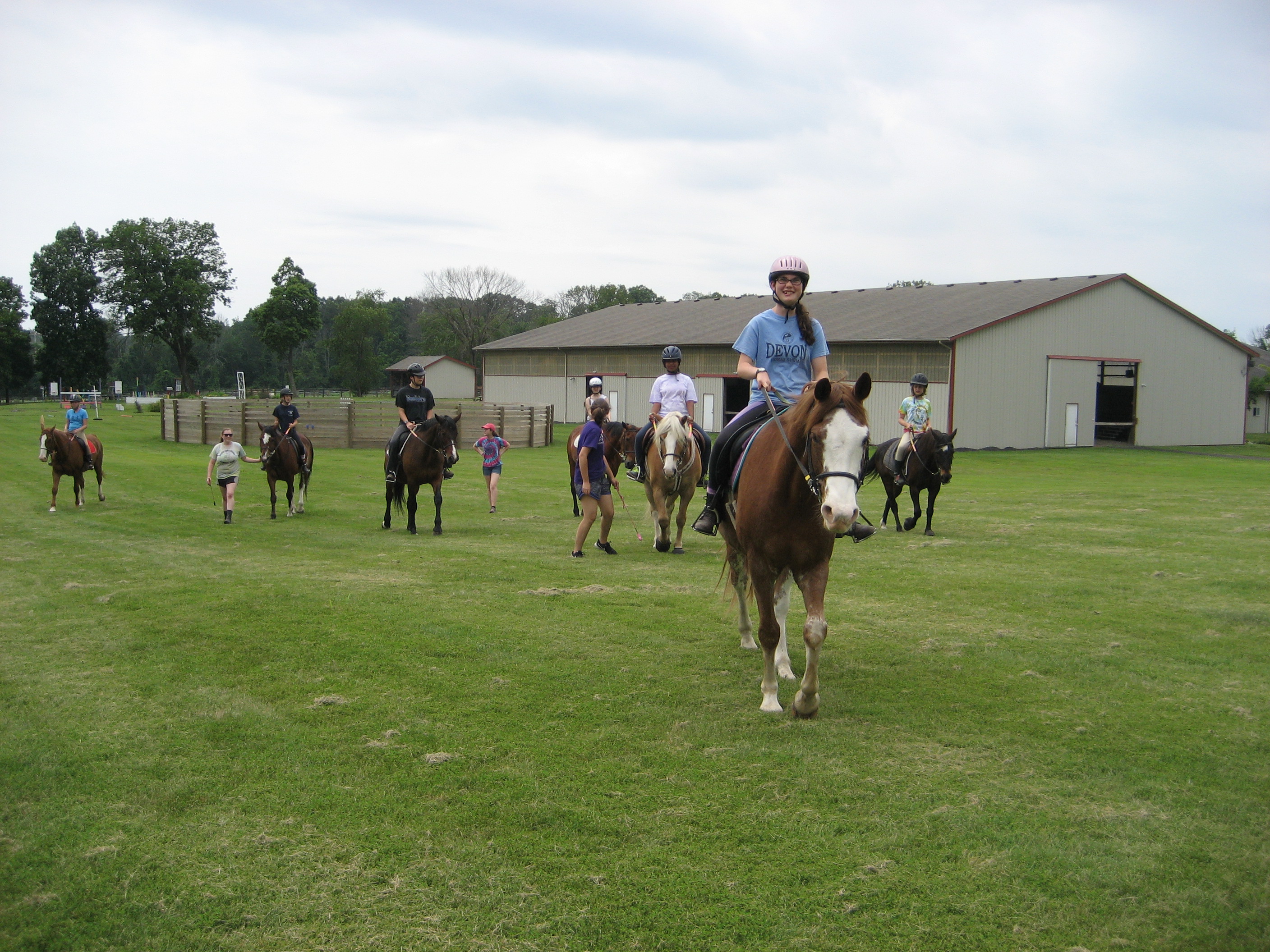
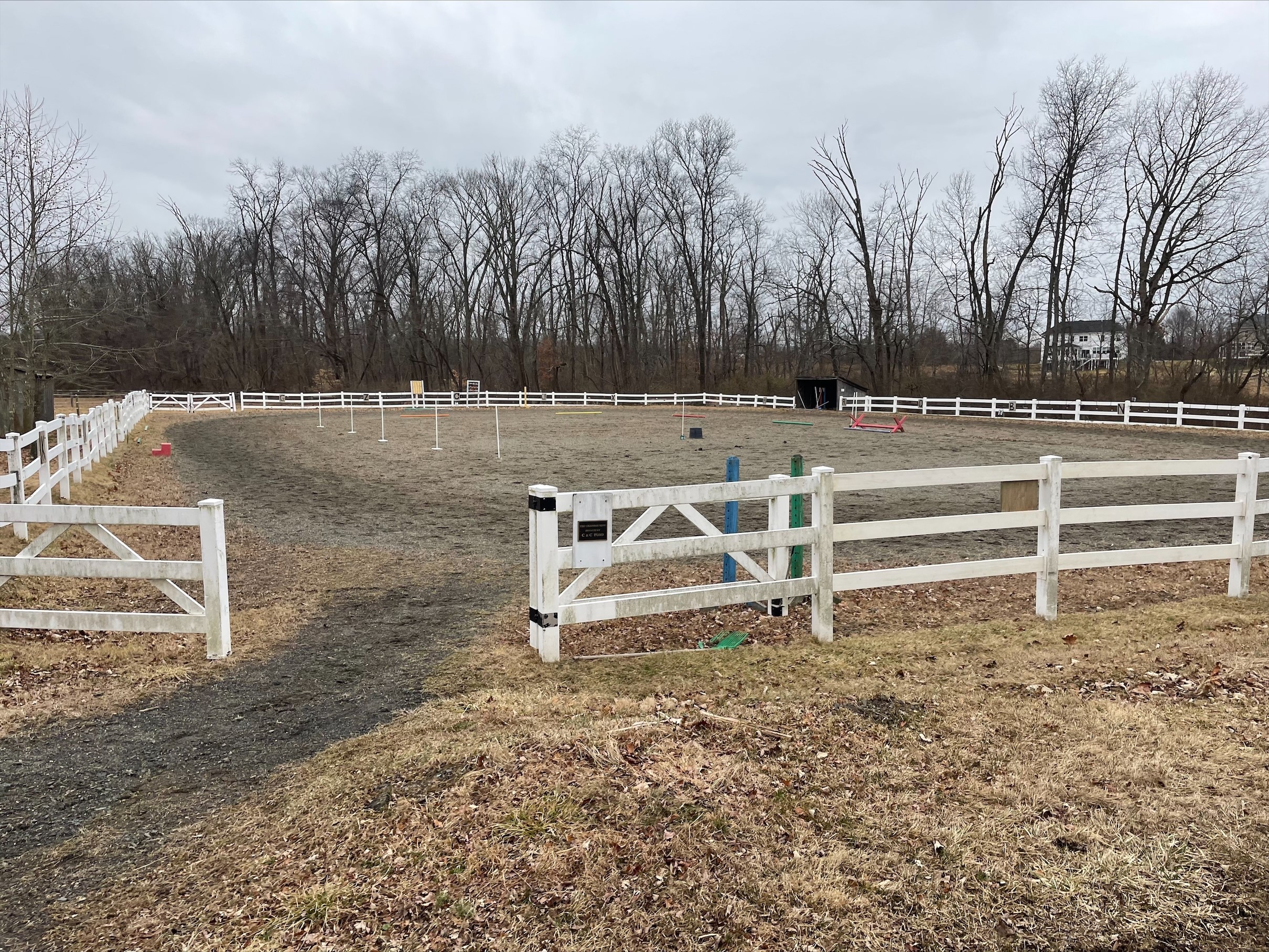
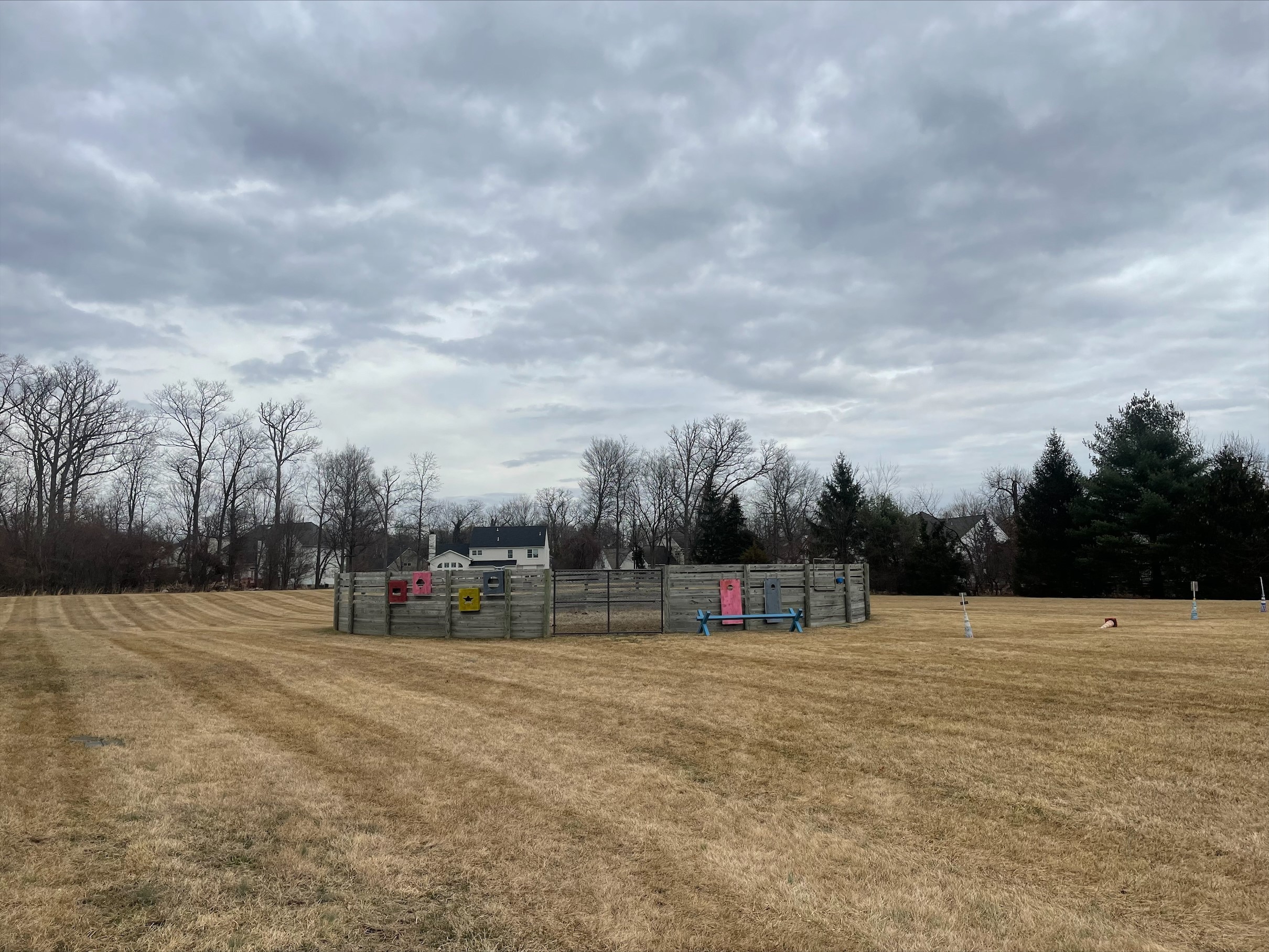
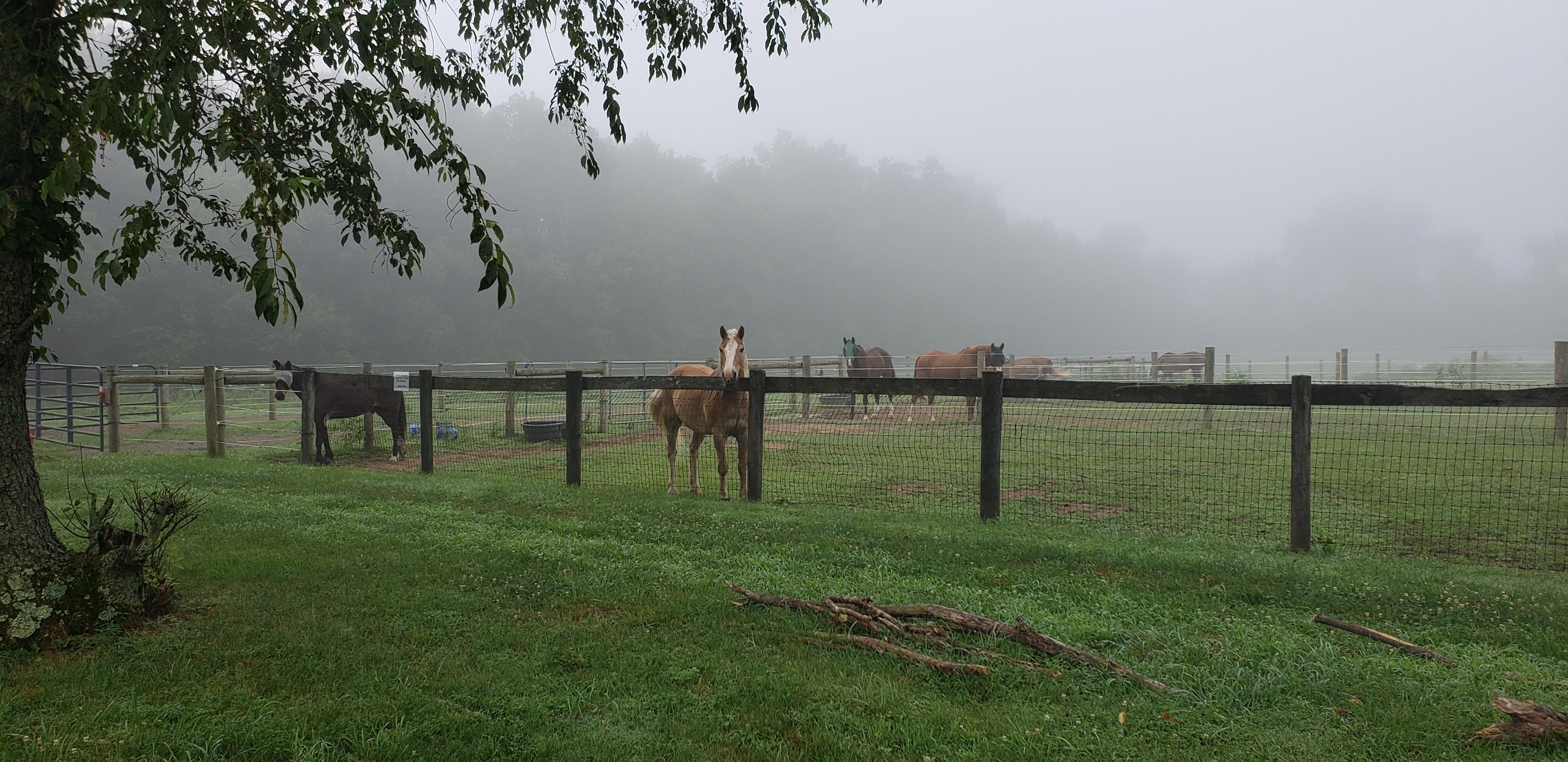
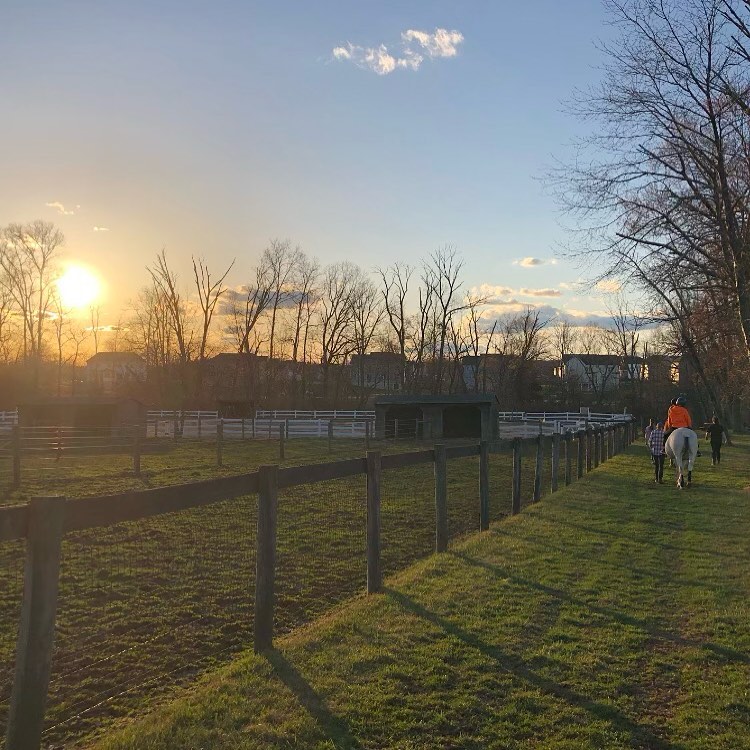
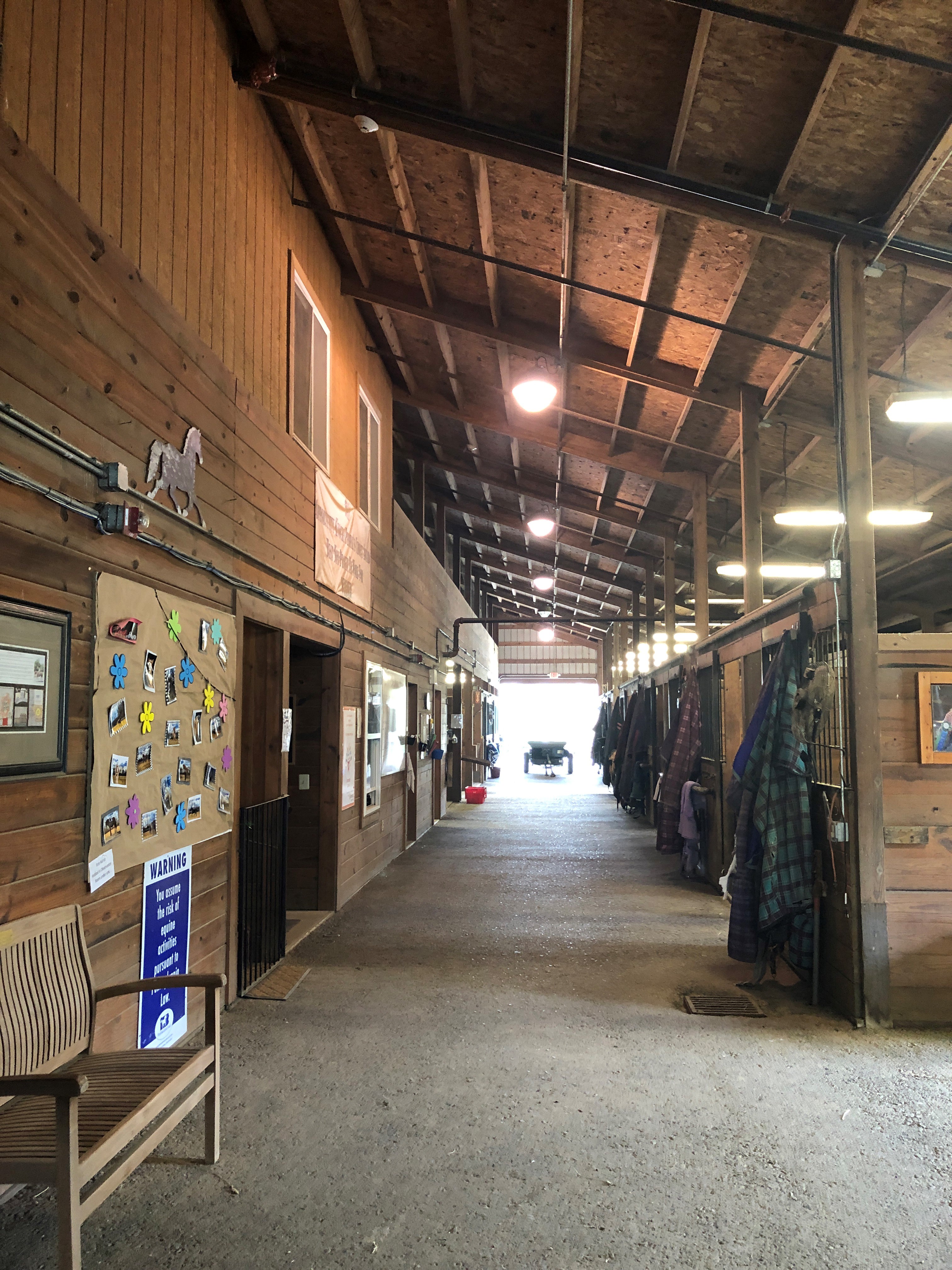
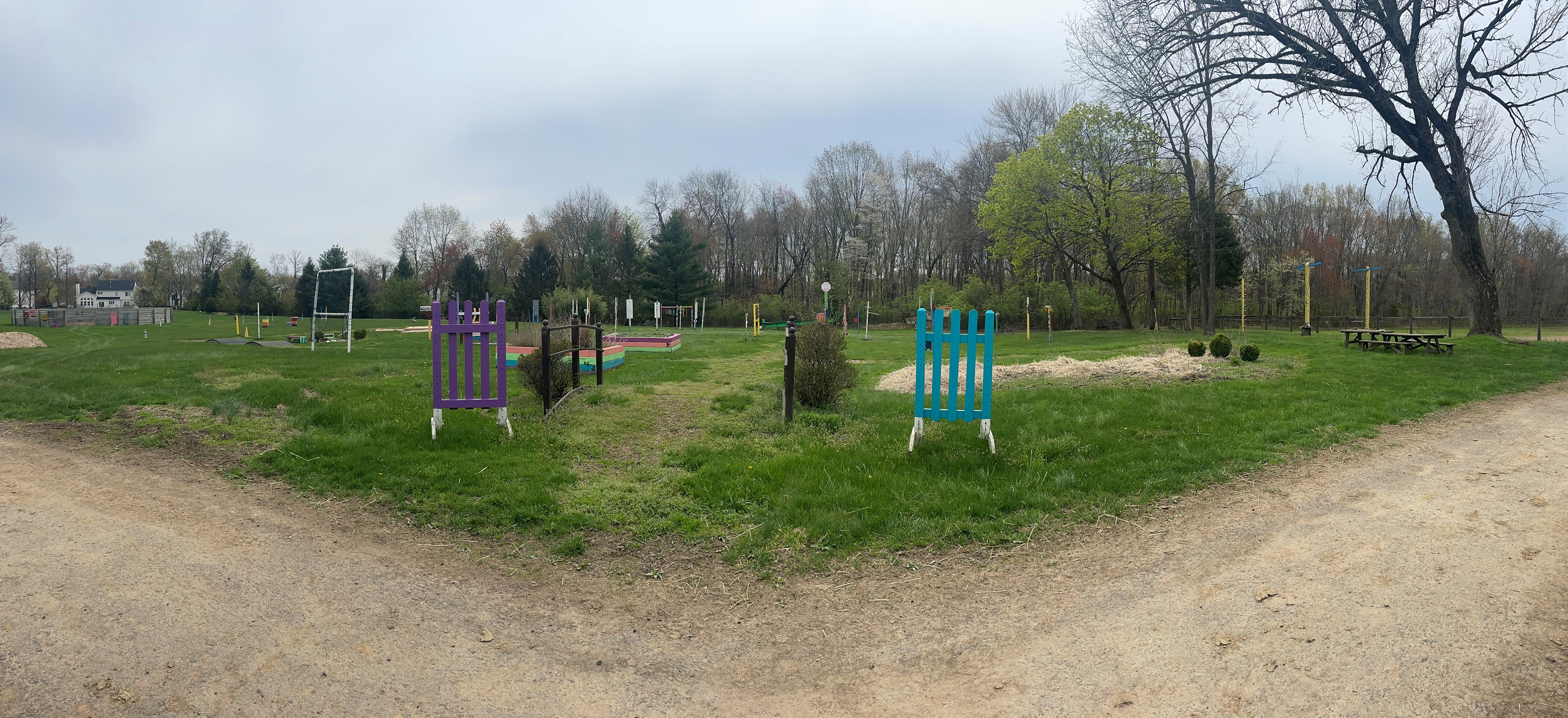
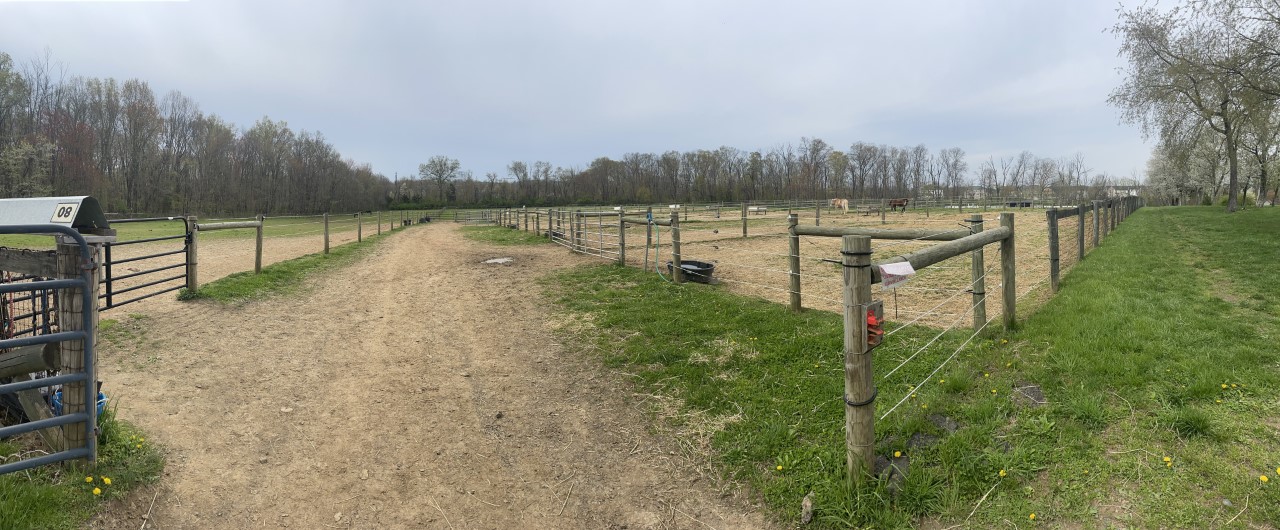
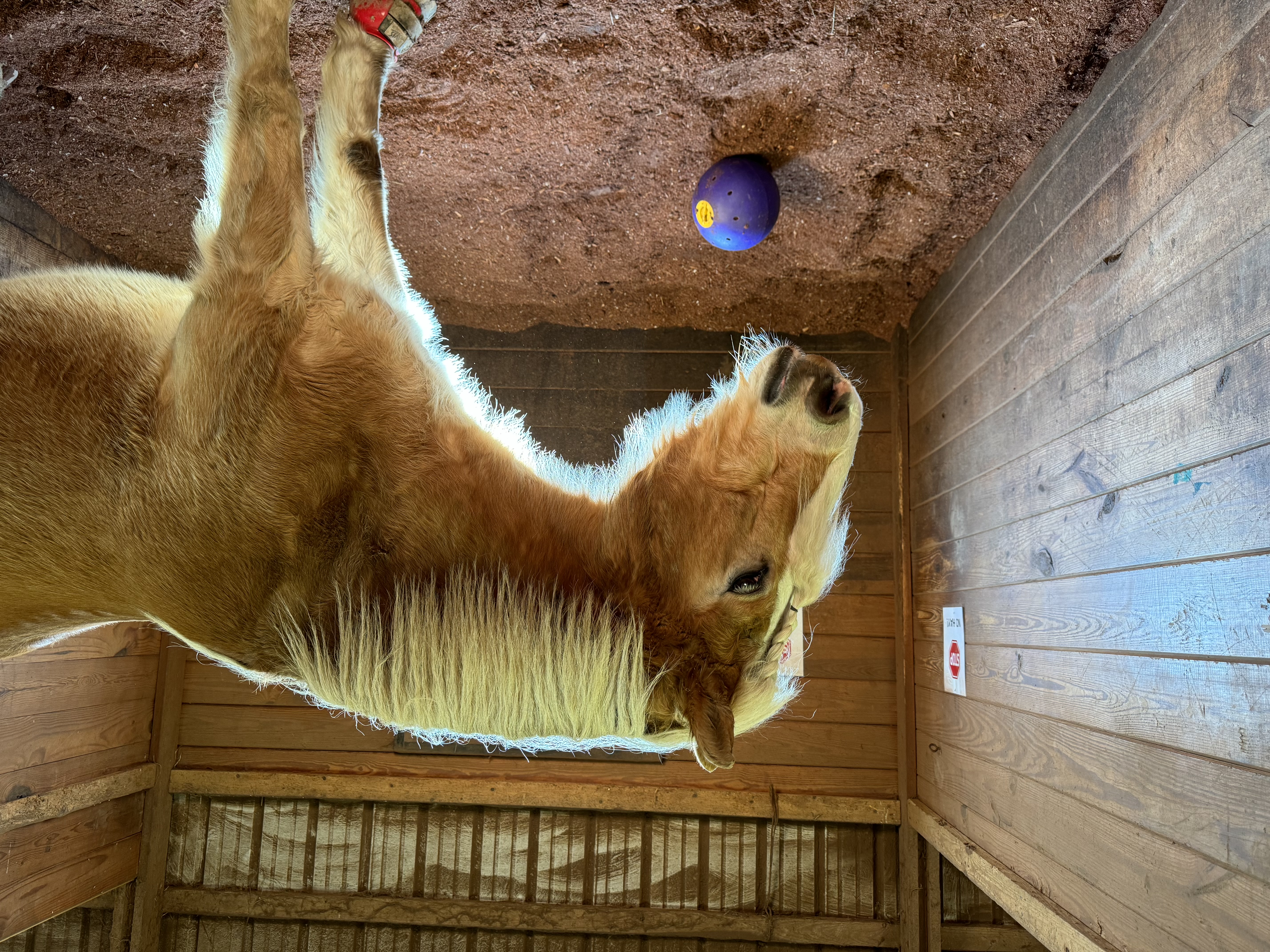
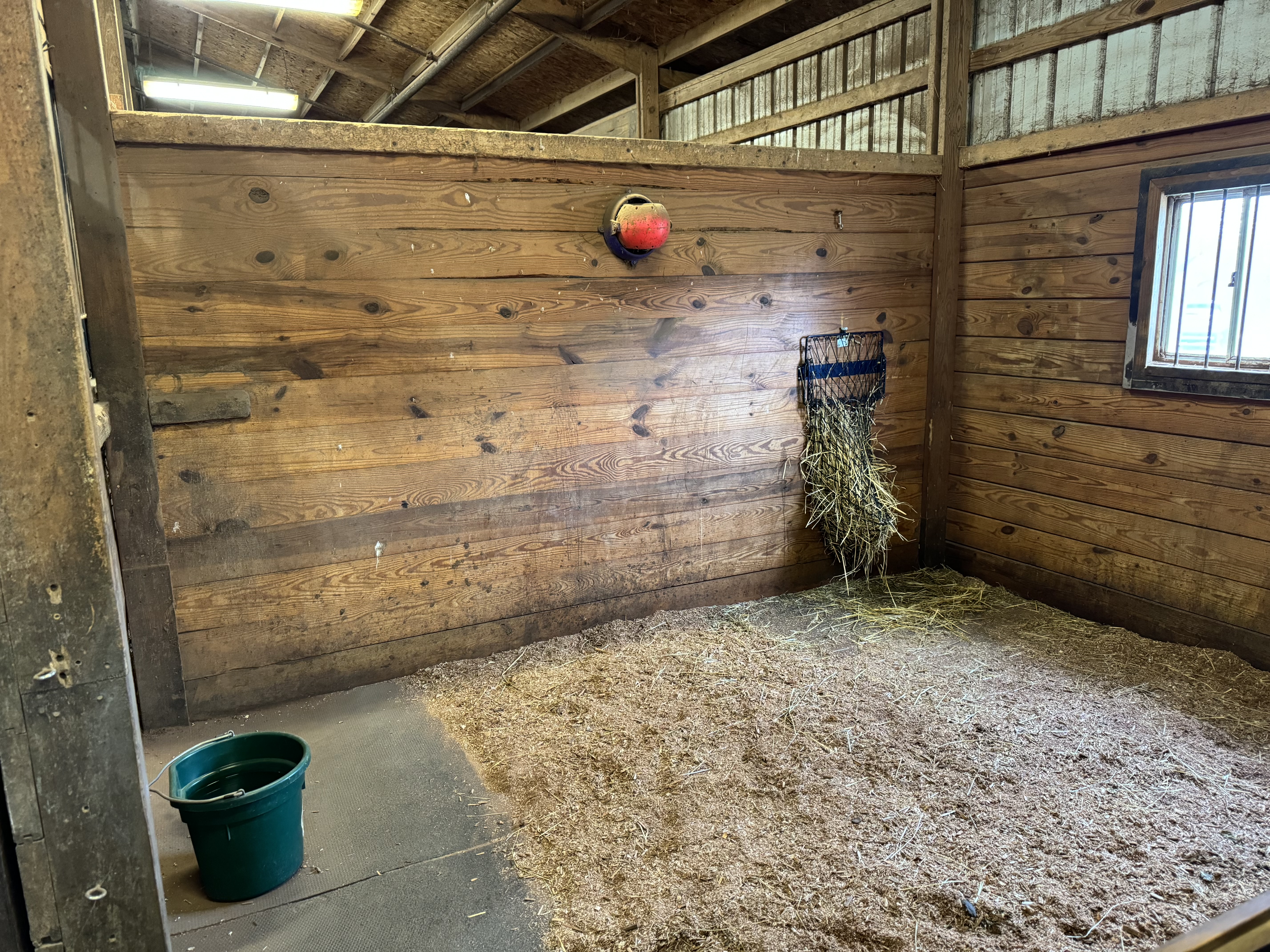
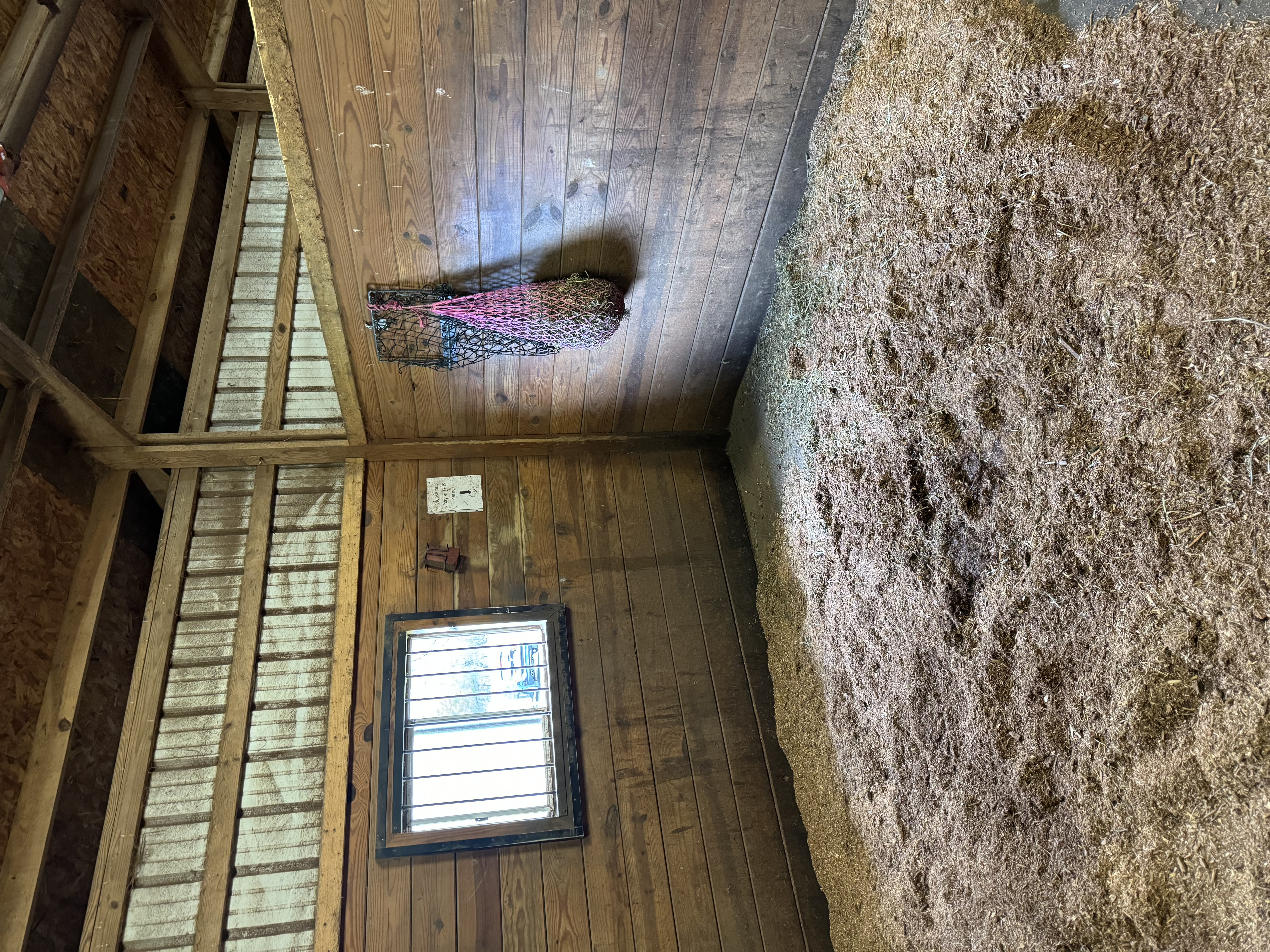
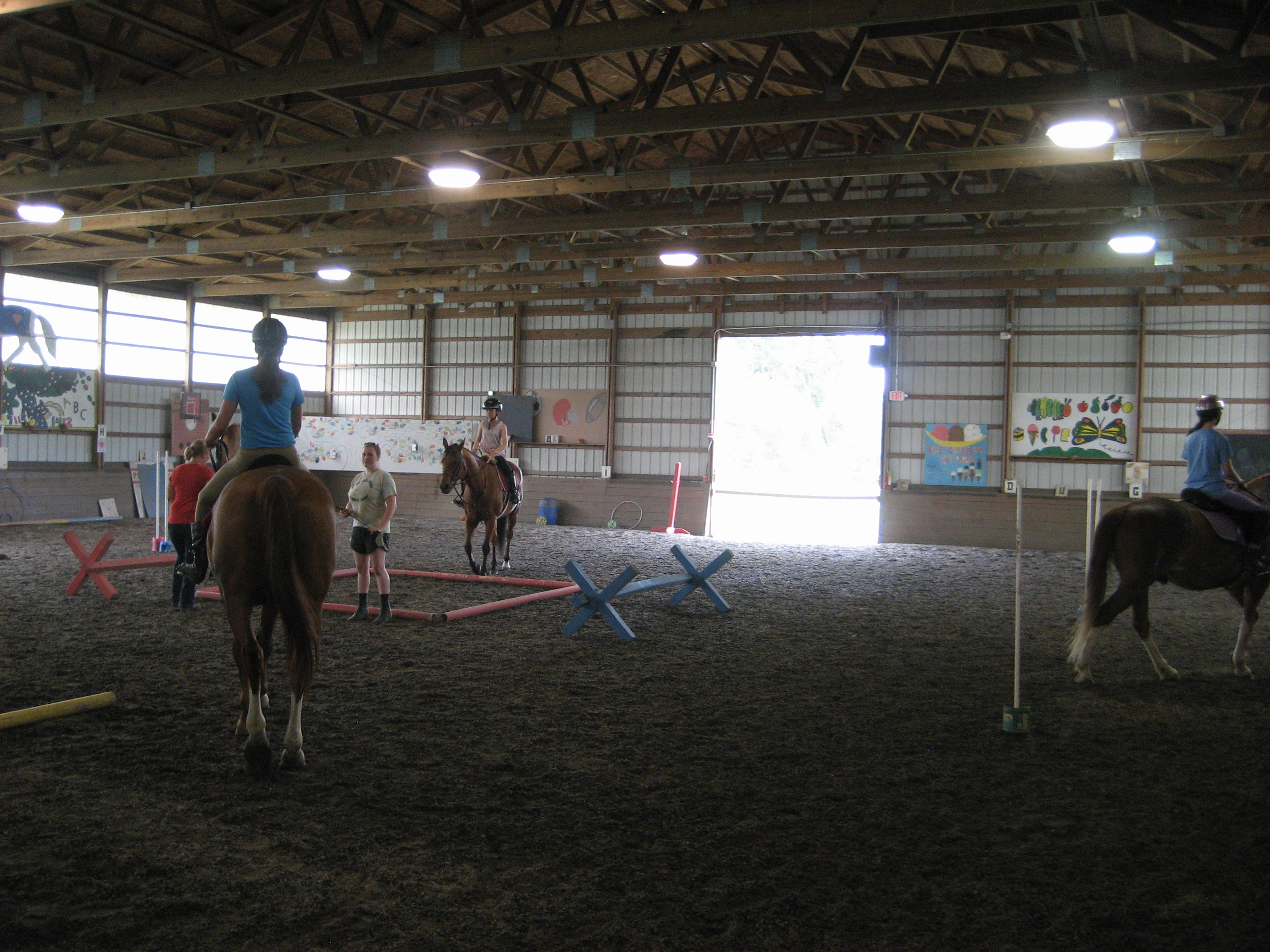
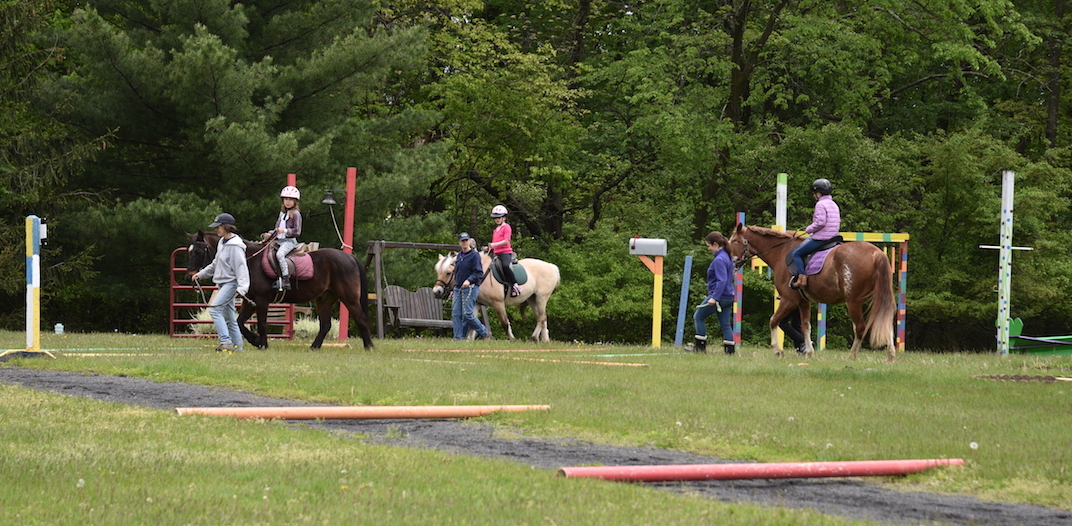
Regarding structures at this facility where horses are stalled:
Do horses have assigned stalls in the structure(s)? Yes
Do all stalls/enclosures allow horses to lie down, stand up and turn around? Yes
Is there adequate ceiling & beam height (a minimum of 12 feet above the tip of the horse's ear) when standing in all stalls/enclosures? Yes
How often are the stalls/enclosures cleaned? 6-7 Days a Week
Are floors constructed and maintained for both good drainage and traction? Yes
Is there a ventilation and circulation system in place to control temperature and prevent buildup of toxic gases? Yes
Is wiring inaccessible to horses and maintained for safety? Yes
Are fire prevention/protection measures (fire alarms, extinguishers and sprinkler systems) maintained and in good working order? Yes
Is there adequate lighting to ensure safety in all areas of facility? Yes
Are emergency contacts, including veterinarian contact information, conspicuously posted in easily accessible locations? Yes
Are human and equine first aid kits easily accessible? Yes
How many hours per day, on average, are horses stalled? 9-12
How many hours per day, on average, are horses turned out:
Equines are out 16+ hours per day
The following describes the pastures at this facility:
This facility has a written plan in place for pasture management, which includes guidelines for seeding, fertilizing, irrigation, mowing, dragging, harrowing, manure removal, removal of debris, the control of poisonous plants, and a schedule for cleaning
A dedicated staff person(s) is responsible for pasture management
All pastures are fenced to prevent escape or injury
Electric fencing is used; electric wires or tape fence are visibly marked
Fencing checks, such as broken or missing planks, loose fence posts, exposed or loose nails, detached wires, etc., are done regularly
Pastures are rotated
Pastures have natural protection for equines (i.e., trees)
Pastures have man-made protection for equines (i.e., shelters)
This facility does not have pastures where equines can graze on pasture grass
Barbed wire is used for fencing
The following describes the turnout areas other than pastures at this facility:
This facility has a written plan in place for the maintenance of turnout areas, which includes a schedule for cleaning, manure removal, and dragging
A dedicated staff person(s) is responsible for the maintenance of turnout areas
All turnout areas are fenced to prevent escape or injury
Electric fencing is used; electric wires or tape fence are visibly marked
Turnout areas have man-made protection for equines (i.e., shelters)
Fencing checks, such as broken or missing planks, loose fence posts, exposed or loose nails, detached wires, etc., are done regularly
This facility does not have turnout areas
Barbed wire is used for fencing
The following policies and procedures are in place at the facility to restrict public access and to keep horses safe:
Equines are checked overnight
No Trespassing signs are posted
Hold Harmless signs are posted
Authorized Personnel Only signs are posted
Visitors are only permitted at specific times
Visitors are only permitted in specific areas
The property is fitted with motion lights
The property is fitted with a security system monitored by police or a professional service
The property is fitted with a security system that is monitored internally by staff (or the property owner)
The property owner, staff member or caretaker lives on the premises and ensures that public access is restricted and is responsible for the security of the facility and equines
A security guard is present at night
By Appointment Only signs are posted.
Entrance gates are locked at night
The perimeter of the property is fully fenced
Equine Care/Emergency Preparedness: Special Equestrians (*Main) 2024 and 2023 This section is required.
Horse Health Care/Barn Management Records: What system is used to collect and store health/horse care records?
Onsite computer with cloud-based backup storage system
The organization utilizes its own system to maintain records
The following items are consistent with our feed management plan and practices:
Equines are provided with individualized feeding plans, including supplements, according to age and any health issues
Feed plans are determined in consultation with a veterinarian
Supplement plans are determined in consultation with a veterinarian
Equines are fed in individual stalls
Staff and volunteers are trained in proper feed measurements and protocols and observed periodically to ensure they are feeding correctly
The feed chart is centrally located and updated as needed
The area(s) where hay, feed, grain, and supplements are stored are kept clean, free of debris and chemicals, and protected from weather and other animals in rodent-proof and mold-proof containers and grain bins
Feed, supplements and hay types are clearly labeled
Water sources, i.e., buckets, troughs, automatic waterers, etc. are kept clean, free of debris and chemicals, and protected from weather and other animals
Medications are kept in a locked, climate-controlled area
Equines are fed in groups
Do horses have access to clean drinking water at all times? Yes
Hoof Care: How often is hoof care provided for each equine? Every 4-8 weeks and when an issue arises
Dental Care: How often is dental care provided for each equine? Annually and when an issue arises
Horse checks: How often are equines visually and physically checked by personnel at the facility? Every day or 6 days a week
Parasite Control: Our organization has the following worming protocols in place: (Check all that apply
The protocol for each equine is determined in consultation with a veterinarian
Fecal testing is performed prior to the use of a de-wormer.
A de-wormer is used without fecal testing
Fly/Insect Control: What remedies are used to control flies and insects?
Fly Traps and Tapes
Fly Spray Repellent
Fly Masks
Fly Sheets
Fans
The following represent the biosecurity practices in place at facility:
Our organization follows the AAEP's Biosecurity Guidelines and/or the UC Davis Biosecurity Guidelines
Our organization follows the biosecurity guidelines of our veterinarian
Sick, affected and/or quarantined equines do not have contact with other equines or other animals
The organization has a written biosecurity plan
All staff are trained in best practices related to biosecurity
All volunteers are trained in best practices related to biosecurity
Sick, affected and/or quarantined equines are cared for last if the caretaker must also care for healthy equines
Restricted access signs are posted at primary points of access to sick, affected and/or quarantined equines
Manure and bedding from sick, affected and/or quarantined equines is disposed of in specific areas designated for infectious materials - not put in open air piles, and not spread on pastures
Stalls, aisle ways, and common areas are disinfected after conclusion of the quarantine
Trailers/vans used by sick, affected and/or quarantined equines are cleaned and disinfected after each use and cleaning takes place away from where equines are sheltered
Equipment used by sick, affected and/or quarantined equines is not shared and is clearly labeled
Shared equipment used by sick, affected and/or quarantined equines is cleaned of organic debris and disinfected after each use
Latex gloves are worn when working with sick, affected and/or quarantined equines
A specific individual is assigned to care for sick, affected and/or quarantined equines
Hand sanitizers and footbaths are available at all primary points of access to sick, affected and/or quarantined equines
Personnel are required to leave the facility (or shower and change clothing) after working with quarantined equines
Equines are not quarantined on arrival.
The following represent the manure removal practices in place at facility:
Manure is piled in an area where equines are not located
Manure piles are composted or spread on pastures
Our organization adheres to the manure management guidelines set by state and/or local authorities
Manure is stored in dumpster(s)
Manure piles are covered
Manure is hauled, sold or given away
The following steps are taken to help staff and volunteers readily identify each horse on the property:
Equines are assigned the same stall/location each day
Name plates are located on the stall
Photos are located on the stall
Equines wear halters with nametags
A notebook or binder with photos and information on each equine is easily accessible
Equine photos and profiles are available on the website
Staff/volunteers are provided training on conformation, markings, colors, and breeds
Team leaders work with new staff/volunteers until they are able to identify the equines
A map/diagram is posted showing the location of each equine with equine names and photos
Staff and volunteers are provided with an information packet with equine profiles, including photos and detailed descriptions
Our organization has the following policies and procedures in place pertaining to tack, apparel and equipment:
All equines have specifically assigned tack, apparel and equipment that is not shared
Saddle pads are shared
Blankets, sheets and turn out apparel are fitted and utilized for each equine appropriate to the equine's needs and the weather conditions
Blankets, sheets and turn out apparel are cleaned regularly as needed
Tack is cleaned after each use
Tack is inspected for overall working condition before each use by trained personnel
Tack is assessed for fit before each use by trained personnel
Tack is assessed for fit by trained personnel when an equine's body condition changes
Tack is assessed for fit by trained personnel when an equine's disposition changes
Assigned tack is clearly labeled
Tack is stored in a climate-controlled location
Helmets are shared
Helmets are cleaned/disinfected after each use
Helmets are replaced after a fall
Helmets are replaced at least every five years.
Saddles are shared
Bridles are shared
Bits are shared
Blankets are shared
Sheets are shared
Turnout apparel is shared
Halters are shared
Tack is cleaned weekly
Tack is cleaned only when needed
This facility enlists the services of a professional saddle fitter at least once a year
No equines are ridden; not applicable.
Emergency Preparedness: Special Equestrians: *Main This section is required.
The following plans, policies, and procedures are in place at the facility to handle emergencies and address weather related issues, fire safety procedures, and/or any additional hazardous scenarios the facility could potentially experience:
Emergency procedures are posted prominently
Emergency phone numbers are posted prominently
The facility maintains at least two weeks of hay, feed, shavings and medications
The facility collects and maintains medical information from staff, volunteers, and clients
The facility maintains appropriate liability and/or workers' compensation insurance
All staff/volunteers are briefed regularly on emergency preparedness/safety procedures
The organization has a written emergency preparedness/safety plan (EPP)
The facility owns or has access to a generator
Local fire department and/or the state's emergency planning department procedures
Medical emergencies for clients, staff, and volunteers
Medical emergencies for equines
Evacuation plans
Power outages
Fire
Natural Disasters - thunderstorm, hurricanes, earthquakes, tornados, etc
Protocols to notify emergency personnel
Building/facility exit plans
Terrorist attacks
The facility follows the specific procedures to help PREVENT emergency situations:
Smoking is strictly prohibited
NO SMOKING signs are posted prominently
Permanent or temporary structures where equines are stalled are kept free of dust, cobwebs, trash, cleaning rags, and other flammable items
Aisles and doorways are kept clear
Hay is stored away from permanent or temporary structures where equines are stalled
Heaters with automatic shutoff settings are used
How often are the following checked or performed?
Fire Extinguishers are checked: Semi-annually
Smoke detectors are checked: Quarterly
Electrical Systems are checked: Quarterly
Fence lines are checked: Daily
Turnout Areas are checked: Daily
Sprinkler systems are checked: Semi-annually
Fire drills are conducted: Not at all/NA
Review of safety protocols with staff are conducted: Quarterly
Review of safety protocols with volunteers are conducted: Monthly
The Emergency Preparedness Plan is reviewed and updated: Annually
Equine Transportation
2-horse van/trailer with truck:
1 Owned onsite 1 Access onsite but not owned 3 Access offsite;
3-horse van/trailer with truck:
0 Owned onsite 0 Access onsite but not owned 1 Access offsite;
4-horse van/trailer with truck:
0 Owned onsite 0 Access onsite but not owned 0 Access offsite;
6-horse van/trailer with truck:
0 Owned onsite 0 Access onsite but not owned 0 Access offsite;
8-horse van/trailer with truck:
0 Owned onsite 0 Access onsite but not owned 0 Access offsite;
10-horse van/trailer with truck:
0 Owned onsite 0 Access onsite but not owned 0 Access offsite;